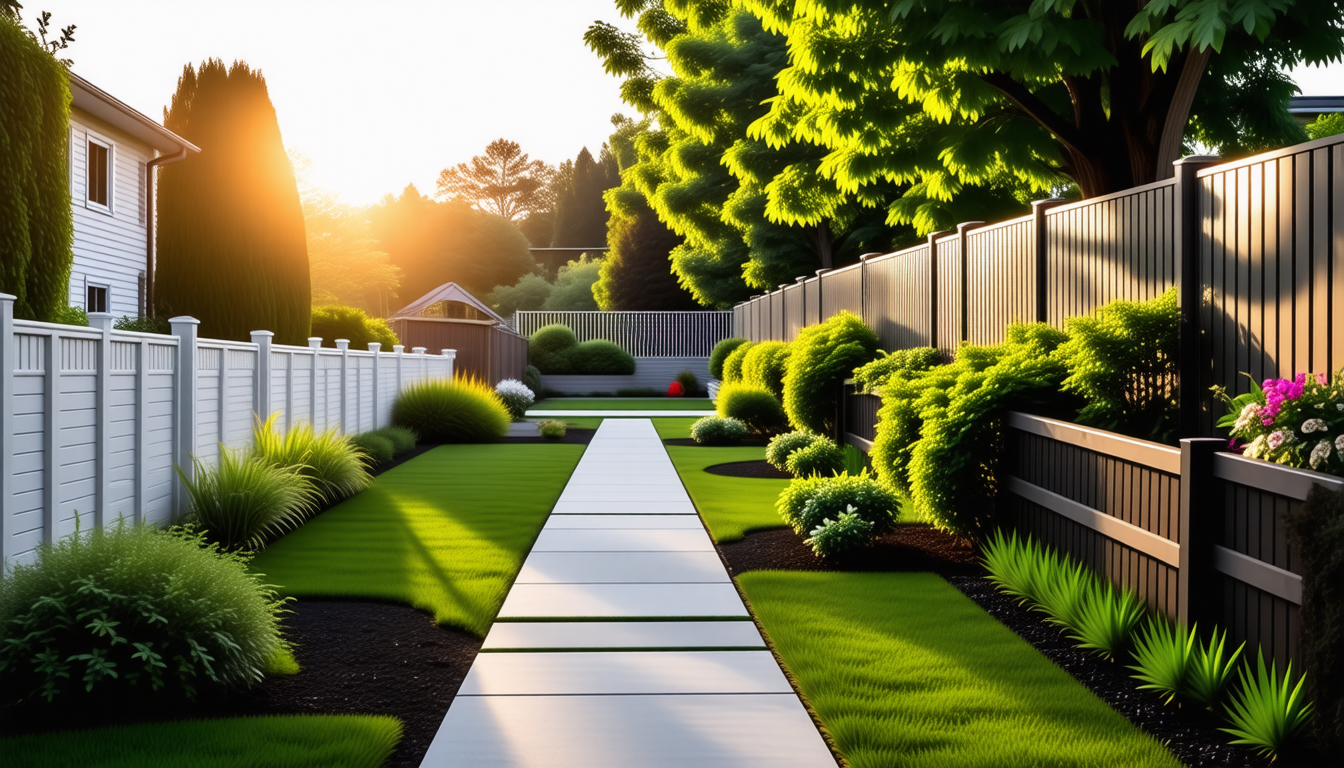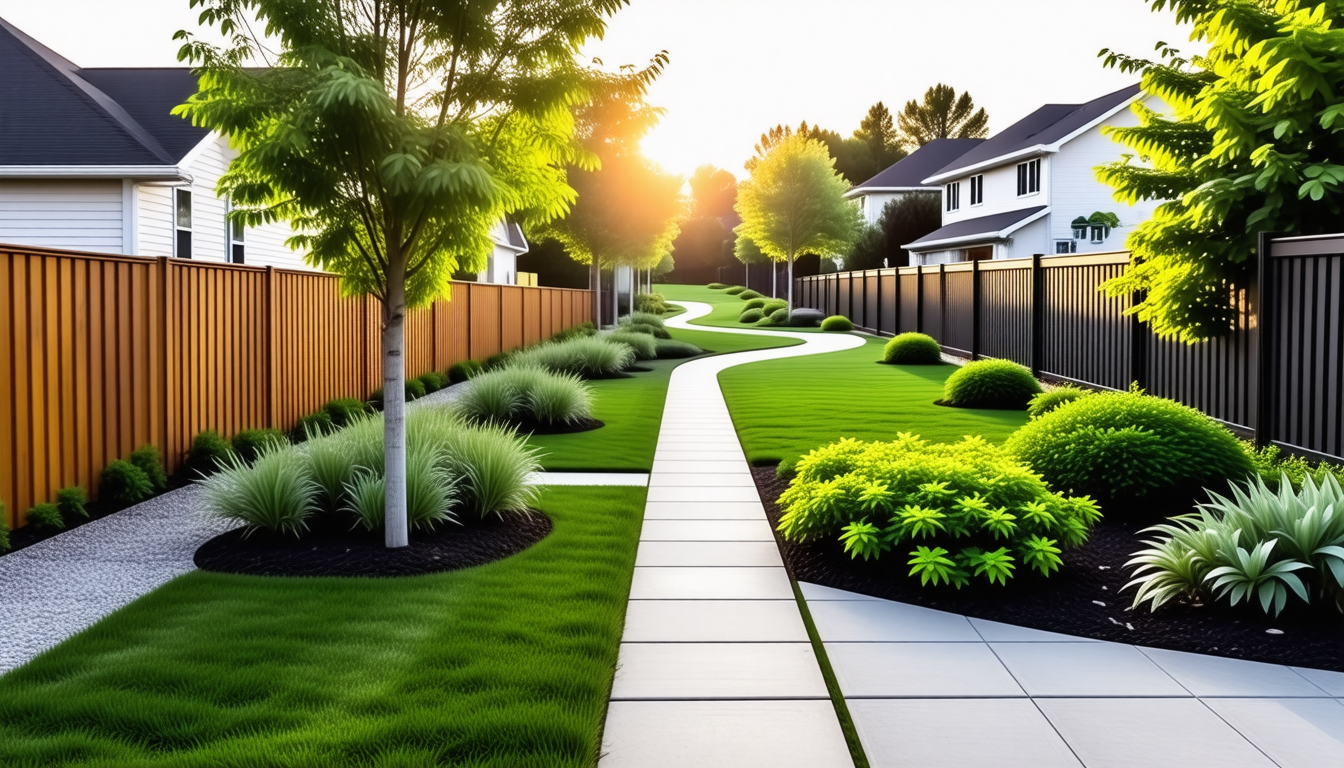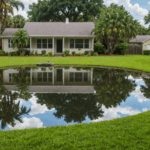When considering an outdoor project like installing a fence, several factors can significantly influence the final costs. Understanding these factors will empower homeowners with the knowledge to make informed decisions and manage their budgets efficiently. Let’s examine some of the key elements that play a role in fencing costs.
First and foremost, the size and layout of the property are fundamental considerations. The larger the area that requires fencing, the more materials and labor will be needed, thus increasing the overall expense. In addition, the shape of the land, as well as its topography, can impact costs. Installing a fence on a sloped or uneven terrain presents more challenges than a straightforward flat installation, often requiring additional support and more complex labor.
Another crucial factor is the type of material selected for the fence. Since different fencing materials have varying price points, the choice of material can drastically affect the total cost of the project. Homeowners might choose between wood, vinyl, aluminum, or chain link, each offering unique benefits and cost implications.
Additionally, local regulations and permit requirements can play a significant role in the cost structure. Many areas require permits for fence installations, particularly if the fence exceeds a certain height or is located in specific zones, incurring additional fees. Compliance with homeowners’ associations’ guidelines can also affect pricing, as certain communities may mandate specific materials or designs.
Seasonal factors and timing can also impact fencing costs. During peak seasons, typically spring and summer, contractors may charge more due to higher demand. Conversely, scheduling an installation during the off-peak months might result in reduced labor costs, offering a chance to optimize the budget.
Incorporating these considerations into your pricing guide can provide a more accurate estimation of potential expenses. Here’s a basic comparison to illustrate how these different components may affect costs:
| Factor | Potential Cost Impact |
| Property Size and Shape | Increases with larger areas or complex layouts |
| Fencing Material | Varies significantly; wood tends to be cheaper than vinyl or aluminum |
| Permits and Regulations | May add permit fees and specific requirement costs |
| Seasonality | Higher costs in peak seasons; potential savings in off-peak |
By proactively considering these factors, homeowners can better estimate their fencing project budget and explore potential savings wherever possible. This nuanced understanding is vital for any homeowner commencing an outdoor project and seeking to execute it successfully within a planned financial framework.
types of fencing materials and their prices
When it comes to selecting the right fencing material for your outdoor project, it’s crucial to balance aesthetics, functionality, and budget. Different materials not only offer varied visual appeal but also come with distinct cost implications. Understanding these differences can help homeowners make an informed choice. Here’s a detailed breakdown of popular fencing materials along with their respective price ranges:
1. Wood Fencing
Wood is a classic choice and blends seamlessly with most landscaping styles. It’s known for its natural beauty and versatility. However, its price can vary significantly based on the type of wood selected:
– Cedar: Priced at approximately $7 to $15 per linear foot, cedar is naturally resistant to decay and insects, making it a durable option.
– Pine: Typically more affordable, ranging from $3 to $7 per linear foot, but requires regular maintenance to prevent rot.
– Redwood: This premium option can cost between $15 to $30 per linear foot, offering exceptional longevity and a rich, natural color.
2. Vinyl Fencing
For a low-maintenance alternative to wood, vinyl is an excellent pick. It’s available in various styles and colors, with a price range typically between $20 to $40 per linear foot. While the initial cost is higher, the long-term savings in maintenance make it an attractive option for many homeowners.
3. Aluminum and Steel Fencing
Known for their durability and minimal upkeep, metal fences provide a sleek and modern look. The pricing varies based on material and complexity:
– Aluminum: Ranges from $20 to $35 per linear foot, offering a rust-resistant property and ease of installation.
– Steel: Generally more robust but also more expensive, costing between $30 to $45 per linear foot. Steel is ideal for those seeking additional security and longevity.
4. Chain Link Fencing
Ideal for those on a tighter budget, chain link fences are functional and effective for defining boundaries. Prices range from $5 to $20 per linear foot. While they might not offer the same level of privacy as other options, they are highly durable and require minimal maintenance.
5. Composite Fencing
This eco-friendly option combines recycled wood fibers and plastic to create a strong, durable product with the look of natural wood. Prices can range from $25 to $45 per linear foot. Composite fences resist fading and require little to no maintenance, making them an excellent long-term investment.
When selecting a fencing material, consider not only the purchase price but also the long-term maintenance costs. Creating a comprehensive pricing guide that includes both upfront and ongoing expenses will offer a more realistic view of what each material truly entails financially. Additionally, keeping in mind factors such as climate, desired longevity, and the specific functional needs of your project will guide a decision that aligns best with your budget and expectations.
labor costs and hiring a contractor
When embarking on an outdoor project like fence installation, labor costs and the decision to hire a contractor play a critical role in shaping the overall budget. Understanding labor costs is essential as they often account for a substantial portion of the fencing project’s price tag. Homeowners should be aware that these costs can vary widely based on several key factors, and hiring the right contractor can significantly influence both the cost and quality of the fence installation.
The complexity of the fence design is one primary factor affecting labor costs. Intricate designs and custom features such as decorative elements, gates, or multi-level installations require more time and skill, thus increasing the cost. Similarly, the type of material chosen for the fence can impact the labor costs. For instance, while a chain-link fence may be relatively quick and easy to install, a heavy aluminum or composite fence might necessitate specialized skills and equipment, thereby raising the labor expenses.
Another consideration is the region or locality of the property. Labor rates can differ based on geographic location, influenced by the local cost of living and the availability of skilled labor. In urban areas or regions with a high cost of living, you can expect higher labor rates compared to rural areas.
Finding the right contractor is pivotal to the success of the project. It’s advisable to obtain multiple quotes from different contractors to compare pricing. However, the cheapest option isn’t always the best; it’s vital to consider the contractor’s reputation, experience, and track record. Reading reviews, asking for references, and verifying credentials can prevent potential pitfalls and ensure that the contractor is capable and reputable.
Additionally, some contractors might offer package deals or discounts for large projects or if materials are purchased through them. It’s worth discussing these possibilities to see if there are opportunities for savings. Transparency is crucial during these discussions; a detailed contract that outlines the scope of work, timeline, and payment schedule can prevent misunderstandings and protect against unexpected costs.
Factoring in potential unforeseen expenses is also important. Whether it’s weather-related delays, unexpected ground conditions, or changes in design during the installation process, having a contingency budget can provide a buffer against such surprises.
In conclusion, a well-considered approach to evaluating labor costs and selecting a contractor can help manage and potentially lower the overall expenditure on fence installation. Using a comprehensive pricing guide for labor costs in conjunction with the other components of fence installation ensures a thorough understanding and management of the potential expenses involved in outdoor projects.
additional expenses to consider
When planning for a new fence installation, it’s crucial for homeowners to consider potential additional expenses that might arise during the project. While the primary costs of materials and labor are typically at the forefront of budgeting considerations, several other factors can unexpectedly increase the project’s financial demands. Gaining an awareness of these additional expenses can help you use your pricing guide more effectively and avoid unpleasant surprises.
One such cost is site preparation. Depending on the condition of the land where the fence will be installed, you might need to invest time and money in clearing vegetation, removing rocks, or grading uneven terrain. This preparatory work can be especially significant in areas with dense foliage or rugged topography and, if left unconsidered, can inflate initial cost estimates.
Additionally, consider the disposal costs for any pre-existing fencing or debris that need to be removed. Hiring a professional service to clear away old materials can add a sizable amount to your overall expenses, particularly if your property is large or the old fence is made of heavy or difficult-to-manage materials.
Fencing accessories and add-ons can also influence the budget. Gates, decorative posts, lighting fixtures, or security elements can enhance both the functionality and aesthetic appeal of your fence. However, these features come at a cost, potentially increasing the total expense of the installation. A detailed pricing guide should incorporate these optional elements to provide a comprehensive financial overview.
Another area where costs can accumulate is in the purchase of tools and equipment if you plan on a DIY installation. Investing in or renting specialized tools like post-hole diggers, power drills, or levelers is often necessary, which can add up quickly if you don’t already own them.
Maintenance is another key consideration. Depending on the type of fencing material chosen, the level of required maintenance can vary. For instance, wood fences often require regular sealing or painting to maintain their appearance and durability, whereas vinyl or aluminum options might have fewer long-term upkeep costs. Although these costs are not immediate, they are important to factor into the overall financial commitment when planning for outdoor projects.
Lastly, while not always applicable, unanticipated legal expenses may arise if there are disputes over property lines or zoning laws. Before installing a fence, it’s vital to ensure all boundaries are clearly and legally defined to avoid these costly disputes.
Including these additional expenses in your planning phase will help you craft a more holistic and realistic pricing guide for your fence installation. By thoroughly understanding and accounting for these potential costs, you are better equipped to manage your budget effectively, ensuring a smooth execution of your outdoor project.
tips for saving on fence installation
When it comes to keeping the costs of your fencing project manageable, there are a variety of strategies homeowners can employ to save money while still achieving their desired outcome. Starting with careful planning and research can lead to substantial savings. Begin by thoroughly measuring your property to avoid ordering more materials than necessary, which can inflate your budget unnecessarily. Having accurate dimensions will also help avoid delays, reducing excessive labor costs.
Choosing the right time for installation can yield cost benefits as well. As mentioned earlier, contractors are often less busy in the off-peak seasons, such as fall or winter, and might offer discounts on labor during these times. Additionally, purchasing materials during sales or off-season can lead to substantial markdowns, allowing you to save on supplies without compromising on quality.
Considering alternative materials can also considerably reduce expenditures. While high-end materials like redwood or ornate metals offer premium aesthetics, cost-effective options such as treated pine or chain link can deliver functionality at a fraction of the cost. Mixing materials, such as combining a wooden fence with metal posts, can also preserve visual appeal while economizing on the more expensive components.
DIY installation is another avenue for cost savings, particularly for those with the time and skills to undertake such a project. While it’s important to have expertise or at least basic DIY knowledge, self-installation eliminates the need for contractor fees. It’s critical, however, to be realistic about your abilities; poorly executed work can result in additional costs for repairs or reinstallation.
For those who prefer to hire professionals, bundling services can oftentimes be negotiable with contractors. Engaging the same company for multiple outdoor projects or offering referrals to neighbors or friends might make a contractor more open to providing discounts or package deals, easing the financial load on individual projects.
Reuse of existing materials when possible can also significantly cut down expenses. For example, repurposing old fence boards or posts, if they are still in good condition, can lead to tangible savings. If removing an old fence, consider reselling salvageable materials or donating them, potentially offsetting new material costs.
Lastly, family, friends, and community networks can be valuable resources. They might provide tools you would otherwise need to rent or purchase and can offer labor assistance. This can free up funds for other aspects of the installation, such as additional decorative or security features.
Implementing these strategies into your planning process can effectively lower the financial demands of your fencing project. By leveraging a comprehensive pricing guide, you can make informed decisions and pursue creative solutions to keep your installation within budget.
In conclusion, understanding the myriad of factors that influence fence installation costs empowers homeowners to manage their budgets effectively. From choosing the right materials and timing the project wisely to considering current and future expenses, a well-rounded approach can make a significant difference. By incorporating these insights into a detailed pricing guide, homeowners can execute their outdoor projects without unnecessary financial strain, achieving a balance between cost and quality.











